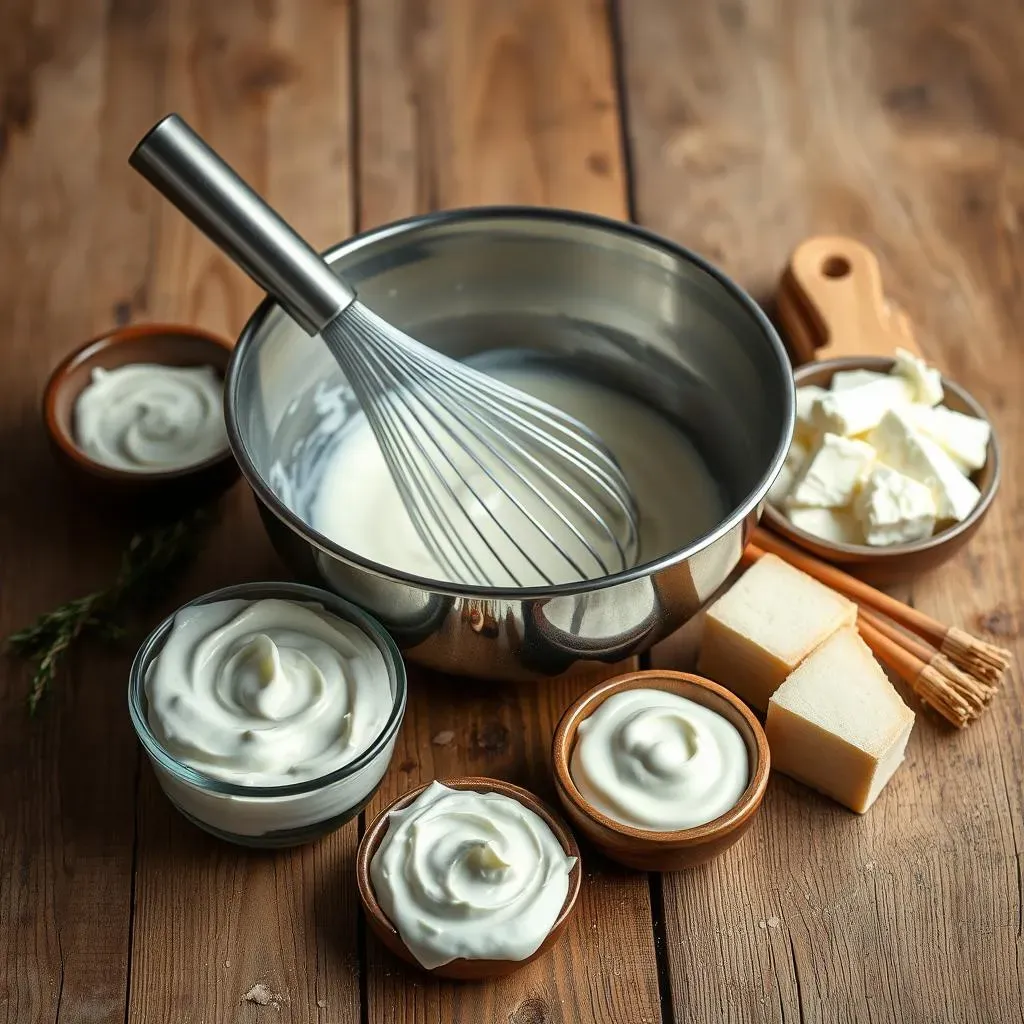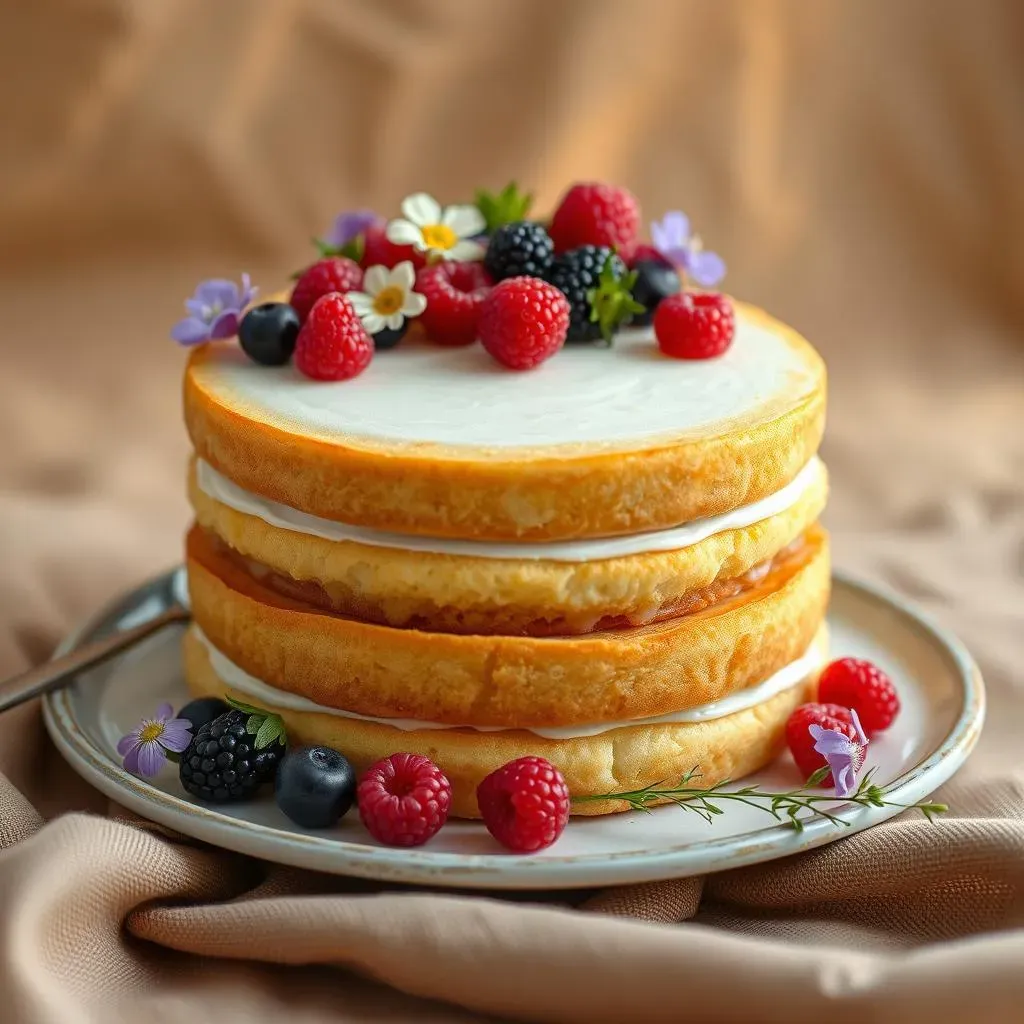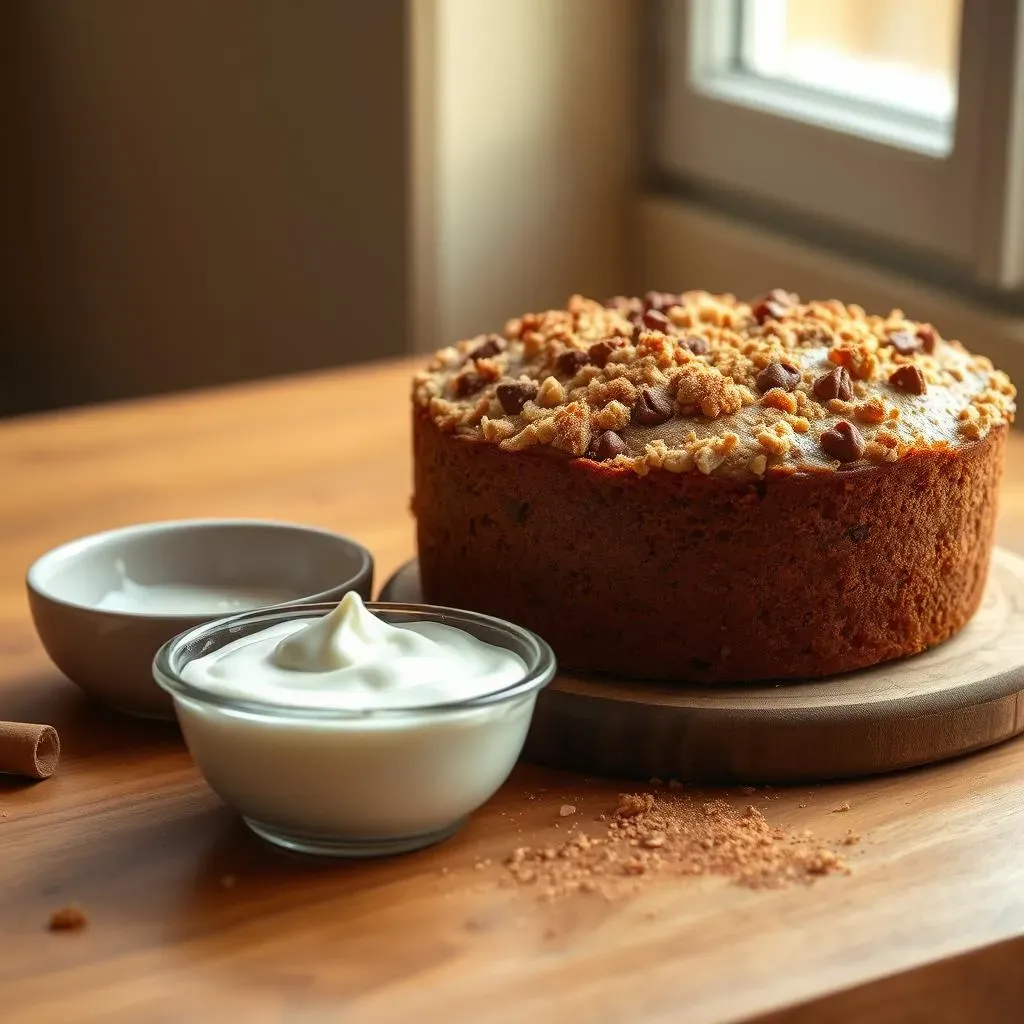Table of Contents
Ever stared blankly at a baking recipe, only to discover you're missing a crucial ingredient – sour cream? Don't despair! This article tackles the burning question: "can I substitute sour cream for plain yogurt in baking?" We'll explore the nuances of this common baking dilemma, guiding you through the similarities and differences between these two dairy products. We'll examine how their textures, tastes, and functionalities impact baked goods. Learning to distinguish these subtle differences will empower you to make informed decisions about substitutions, ensuring your baking triumphs, not flops. Prepare to become a confident kitchen chemist, as we delve into the science (yes, science!) behind successful baking substitutions. We'll arm you with practical tips, tricks, and even specific recipe examples to help you navigate this substitution seamlessly. By the end, you'll feel empowered to tackle any recipe, regardless of what's missing in your pantry!
Can I Substitute Sour Cream for Plain Yogurt in Baking? A Baker's Guide

Can I Substitute Sour Cream for Plain Yogurt in Baking? A Baker's Guide
The Great Sour Cream vs. Yogurt Debate
So, you're wondering if you can swap sour cream for yogurt in your baking? It's a question many home bakers grapple with. The short answer is: sometimes, yes! But it's not always a straightforward one-to-one substitution. Both sour cream and yogurt bring acidity and moisture to baked goods, contributing to a tender crumb and rich flavor. However, their fat content and tanginess differ significantly. Sour cream typically boasts a higher fat content, resulting in a richer, creamier texture. Yogurt, particularly Greek yogurt, offers a thicker consistency but can sometimes be tangier than sour cream. The key is understanding these differences and choosing the right type of yogurt for the job.
Think of it like this: sour cream is the velvety smooth, rich baritone of the dairy world, while yogurt can range from a bright soprano (thin, tangy) to a powerful mezzo-soprano (thick, less tangy Greek yogurt). The best substitution depends on the specific recipe and the desired outcome. A cake might tolerate a swap better than a delicate cookie, and the type of yogurt you choose matters greatly. We'll explore these nuances further, providing guidance on selecting the perfect yogurt stand-in for your sour cream needs.
Ingredient | Fat Content (approx.) | Tanginess | Texture |
|---|---|---|---|
Sour Cream | 20-30% | Mild | Thick and creamy |
Plain Yogurt | 2-10% | Variable | Thinner than sour cream |
Greek Yogurt | 5-15% | Can be tangier | Thick and creamy |
Choosing the Right Yogurt for the Job
Now, let's get down to the nitty-gritty of yogurt selection. Not all yogurts are created equal, and choosing the wrong one can significantly impact the final product. For the most successful sour cream substitution, full-fat Greek yogurt is your best bet. Its thick, creamy texture closely mimics that of sour cream, and its slightly tangy flavor adds a pleasant complexity to many baked goods. If you're using a recipe that calls for a smaller amount of sour cream, plain (non-Greek) yogurt can work in a pinch, but be mindful of its thinner consistency. You might need to slightly adjust the other ingredients to compensate.
Avoid using low-fat or nonfat yogurts, as they often contain added thickeners and stabilizers that can alter the texture and taste of your baked goods. Also, steer clear of flavored yogurts, as their added sugars and artificial flavors will clash with the delicate balance of most baking recipes. Remember, the goal is to mimic the sour cream's contribution to moisture and acidity, not to introduce unexpected flavors. With a little careful consideration, you can easily create delicious baked goods even when your sour cream supply is running low!
- Full-fat Greek yogurt: Best overall substitute
- Plain yogurt: Suitable for smaller quantities
- Low-fat/nonfat yogurt: Avoid for best results
- Flavored yogurt: Avoid due to added flavors and sugars
Understanding Sour Cream and Yogurt: Texture, Taste, and Function in Baking

Understanding Sour Cream and Yogurt: Texture, Taste, and Function in Baking
The Science of Sour Cream
Let's get scientific! Sour cream, a cultured dairy product, is essentially cream that's been fermented with bacteria. This fermentation process gives it that characteristic tangy flavor and thick, creamy texture. The high fat content (typically around 20-30%) is what provides that luxurious richness and helps create tender, moist baked goods. In baking, sour cream acts as a leavening agent, contributing to a lighter, fluffier crumb. It also adds moisture, preventing dryness, and enhances the overall flavor profile. Think of it as the secret weapon for achieving that perfect, melt-in-your-mouth texture.
The acidity in sour cream also reacts with baking soda, creating carbon dioxide bubbles that help the cake rise. This reaction contributes to a lighter and airier texture compared to recipes that don't use sour cream. The high fat content also contributes to a moist and tender crumb; think of it as a tiny, delicious cloud of creamy goodness in every bite. It's not just about texture, though; sour cream adds a subtle tang that balances sweetness in many recipes, preventing them from tasting too sugary.
- High fat content (20-30%)
- Mildly tangy flavor
- Thick, creamy texture
- Acts as a leavening agent
- Adds moisture and richness
Decoding Yogurt: Variations and Baking Behavior
Yogurt, another fermented dairy product, presents more variety. Plain yogurt, unlike sour cream, comes in various fat percentages, from nonfat to full-fat. Greek yogurt, a strained variety, boasts a thicker consistency and higher protein content than regular yogurt. These differences directly impact how it functions in baking. The tanginess of yogurt can vary depending on the brand and type, so always check the label. While yogurt provides moisture, its lower fat content generally results in a less rich texture compared to sour cream. However, its acidity still plays a key role in leavening and flavor development.
The type of yogurt you choose will significantly impact your results. Full-fat Greek yogurt gets closest to sour cream's richness and texture, making it the preferred substitute in most cases. However, even full-fat Greek yogurt might not deliver the *exact* same results. Remember that the lower fat content means less richness, which you can somewhat compensate for by adding a bit of oil or melted butter to the recipe. The tanginess of the yogurt can also alter the final flavor, so be prepared for a slightly different taste experience compared to a recipe that uses sour cream. Experimentation is key to finding the perfect balance!
Yogurt Type | Fat Content | Texture | Tanginess | Baking Suitability |
|---|---|---|---|---|
Full-fat Greek | High | Thick & Creamy | Moderate | Excellent Sour Cream Substitute |
Regular Plain | Low to Moderate | Thinner | Variable | Acceptable for small amounts |
Low-fat/Nonfat | Low | Runny | Variable | Not Recommended |
Successful Substitutions: Recipes and Tips for Using Yogurt Instead of Sour Cream

Successful Substitutions: Recipes and Tips for Using Yogurt Instead of Sour Cream
Cakes and Muffins: A Sweet Success
Cakes and muffins are surprisingly forgiving when it comes to sour cream substitutions. The rich, moist crumb these baked goods are known for can often be achieved using full-fat Greek yogurt. The higher fat content in Greek yogurt helps to create a tender texture, while its tanginess adds a delightful contrast to the sweetness of the cake or muffin. For example, in a classic sour cream coffee cake, substituting an equal amount of full-fat Greek yogurt for the sour cream results in a nearly indistinguishable final product. The slightly tangier flavor of the yogurt might even enhance the coffee cake's overall taste profile.
However, remember that the texture might not be *exactly* the same. Sour cream's higher fat content leads to a slightly richer, creamier texture. If you notice your cake or muffins are a tad drier than usual, you can add a tablespoon or two of melted butter or oil to compensate for the lower fat content of the yogurt. Always start with a small adjustment and taste as you go. Remember, baking is a journey of experimentation, and sometimes the best recipes are born from happy accidents!
Recipe Type | Yogurt Recommendation | Adjustment Tips |
|---|---|---|
Coffee Cake | Full-fat Greek Yogurt | Add 1-2 tbsp melted butter if needed |
Banana Bread | Full-fat Greek Yogurt | None usually needed |
Carrot Cake | Full-fat Greek Yogurt | May need to add 1 tbsp oil |
Quick Breads and Biscuits: A Tangy Twist
Quick breads, such as cornbread or zucchini bread, also benefit from the moisture and acidity of yogurt. The tanginess of the yogurt can add an interesting twist to these recipes, complementing the other flavors. In biscuits, yogurt's acidity helps to tenderize the dough, resulting in softer, fluffier biscuits. However, because quick breads and biscuits rely on a lighter structure, it’s crucial to choose a yogurt that’s not overly tangy. A milder full-fat Greek yogurt or even plain yogurt will work well. Avoid low-fat options, as they may lead to dry or crumbly results.
When substituting yogurt in quick bread recipes, it's usually a straightforward one-to-one swap. However, you might find that the texture differs slightly. If the final product seems a bit dry, you can add a small amount of milk or buttermilk to increase the moisture content. Remember, every oven and every ingredient varies slightly, so don't be afraid to adjust the recipe based on your specific results. Baking is all about understanding the ingredients and adapting to the unique characteristics of each one. It's a journey of discovery, not a rigid set of rules!
- Cornbread: Use full-fat Greek yogurt for a moist crumb.
- Zucchini Bread: Plain yogurt works well, adding moisture without overpowering flavors.
- Biscuits: Full-fat Greek yogurt creates tender, fluffy biscuits.
Sauces and Dressings: A Creamy Alternative
Beyond baked goods, yogurt makes a fantastic sour cream substitute in many savory applications. Think creamy dips, sauces, and dressings. In recipes like a creamy dill sauce for fish or a cool ranch dressing, full-fat Greek yogurt provides the necessary creaminess and tang without the heavy richness of sour cream. Its slightly thinner consistency might require a minor adjustment in the recipe, such as adding a bit more thickening agent like cornstarch or flour if needed. The substitution works especially well in cold dishes, where the yogurt’s tanginess shines through.
Many recipes calling for sour cream in sauces and dressings easily accommodate a yogurt swap. Remember to taste and adjust seasonings as needed, as the flavor profile might differ slightly. The yogurt's tang might require a small increase in salt or other spices to balance the overall taste. This is where your culinary intuition comes into play! Don't be afraid to experiment and adjust to your preferences. Remember, the goal is to create a delicious final product, and taste is subjective. Experimentation and personal preference are key to culinary success.